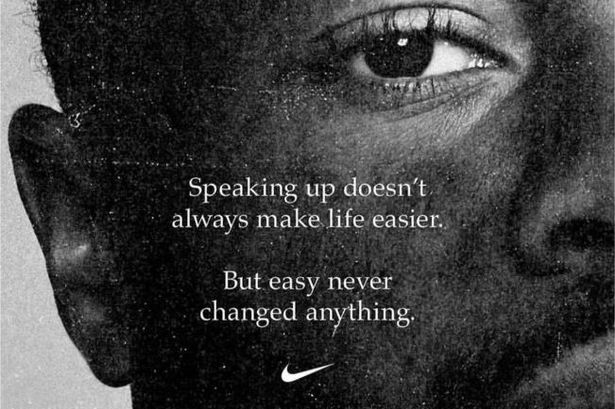People want to buy into something rather than just buy it. That’s why storytelling is so important
Once upon a time there was no brand storytelling. Everything was so plastic, fake, and sterile. Nothing had emotion, nothing made us feel anything. You’d be sat there, reading this article with a straight face and a stiff lip.
Companies proudly boasted financials, data, and specs that nobody understood. Consumers chose the highest numbers with the lowest price. They’d buy something because it was the first one that popped up, and only if it was absolutely essential.
In the age of the eBay, Amazon, and AliBaba behemoths, marketplaces are full to bursting with the same products. Everything is super-available, and having a good product is not enough for a brand anymore. Consumers need to buy into something rather than simply to buy from it.
What is storytelling?
Stories have been around for as long as humans; the only reason we know so much about our earliest ancestors is through the stories they etched into rocks. Storytelling is humankind’s default method of communication, and more recently it has become a core element of content marketing.
Storytelling is a narrative to connect your brand to its customers, with a focus on linking what you stand for, to the values you share with them.
The main character in a story is the customer, rather than the company, and values are the traits of the characters, both brand and customers, that are central to the story.
Why do storytelling?
Lifeless words and phrases, lazily spaffed across websites, do not work. Product specifications are dead. Nobody remembers statistics; it’s pig-headed for brands to expect consumers to. Stanford Graduate School of Business found that stories are up to 22x more memorable than facts and figures alone. Storytelling conveys important information in an elegant way.
It also brings brands closer to their customers. According to Edelman’s Brandshare study, 87% of customers want to develop more meaningful relationships with brands. People are hungry to be connected with, and a well-told brand story can be the bridge between a business and its customers.
Finally, stories offer value for a business. However, ROI delivered by a story can be difficult to quantify. Walker & Glenn created significantobjects.com to demonstrate the power of a narrative. They bought random knick-knacks and sold them on eBay with a made up story attached to them. Their original $128.74 investment generated a $3,612.51 return.
Stories are memorable, they connect us, and they increase the value of a product.
What makes good storytelling?
By nature, each brand story is different. However, we can see three features mirrored across every successful one – conflict, context, and continuity.
Conflict
Without his beanstalk, Jack & the Beanstalk would simply be Jack. Conflict is at the heart of every good story, and a story isn’t much of a story without it. Whether it’s complication, injustice, monetary, or something else, customers need to recognise that a brand sees, and better, shares their conflict. To address this, a brand needs to develop a detailed buyer persona.
A buyer persona is a detailed model of the ideal customer for your brand. Beyond basic profiles, companies should hold Jobs to be Done interviews with existing customers. It dives deeper into the motivations that drove a customer to a brand, and aims to expose the conflict that their customers share.
- What was your problem?
- How did you purchase the product?
- Tell me about the process of finding it.
- Did you try any other solutions?
These questions should only be taken as an outline. JTBD interviews shouldn’t stick to a script; they need to go into as much detail as possible.
NetHunt is a CRM system whose customers’ conflicts are conceived by complication.
‘Our lightbulb came when I was working at another CRM company. Customers were paying $3,000 per year, getting engineers in to install servers, and spending weeks changing their processes and training staff to use it.
I thought ‘what the heck, man?’ CRM needs to be about simplicity and clarity. CRM should work the way you see your business, not the way somebody else sees it.’
Co-founder, Andrei Petrik, experienced his customers’ conflicts whilst working on the frontline of CRM. He saw that CRM systems weren’t built for what is now his target audience, small to medium-sized companies. So, NetHunt’s content marketing strategy is solely focused on finding solutions to their customers’ conflicts.
Context
Every story needs context; every author needs to set the scene upon which their story can take place. Adding context to a story, a brand builds their character, and identifies a niche in the market into which they fit. Context provides the framework around which marketers can weave a story.
Finding a niche is the most difficult part of brand storytelling. Founders need to take it back to the beginning and ask themselves where it all began. No founding story is the same, so this gives storytellers a unique opportunity to explain what sets them apart from the competition.
Burt Shavitz, founder of Burt’s Bees, is an unlikely modern saviour; a hippy warrior coming to rescue the modern cosmetics industry. In a world that is so obsessed with clout and likes – Burt is not.
Where the modern cosmetic industry airbrushes its models until there is nothing left – Burt does not. Burt is Burt’s Bees and there’s no one like him in the world. His obsession with nature is what sets his brand apart from the competitors around him, and this, in turn, draws customers to it.
Continuity
The reward for finding a niche to fit your brand into is priceless; it remains yours forever. Brand storytelling is a perpetual journey, and the best stories never stop being told. A successful brand story creates sub-plots and splinter stories, and the best ones go from being simple tales to blockbusting legacies.
Continuity needs to be attached to the growth a brand expects. If a brand story is successful, it needs to be translated into different languages, uploaded to every platform, and told through different mediums. A story should be able to be told in long form, short form, and an even shorter strapline. A brand story should be at the heart of new employee training.
Three words: just do it. Nike are royalty in the storytelling world. Their brand story started with an old bloke called Walt running along Brooklyn Bridge. The idea is that no matter who you are, you can just do it. It is David vs. Goliath, where Nike represents everybody (David), against misconception and stereotype (Goliath).
Fast forward, and those simple three words are applied to stories, told in different languages, across the globe. It’s splashed across t-shirts and painted on shop walls; visualised in beautiful video adverts and plastered on gigantic billboards. Nike has even developed a loud political voice, speaking out against issues such as gender inequality and racism, as we saw with the Raheem Sterling and Colin Kaepernick incidents.

A story forms public perception of a brand. As markets get more and more crowded, stories become more important to help a brand stand out from the crowd. They add value to a product, they build trust, and offer a closer connection to customers. Writing a good story is not done overnight, it is a process of reflection, application, and trial-and-error. If a story is good enough, it builds a legacy and immortalises a brand as so much more than just a brand.
Storytelling isn’t just nice to have anymore, it’s a need to have.
Table of Contents
Crack the sales formula with CRM Lab
Twice a month, receive actionable CRM content to your inbox.


